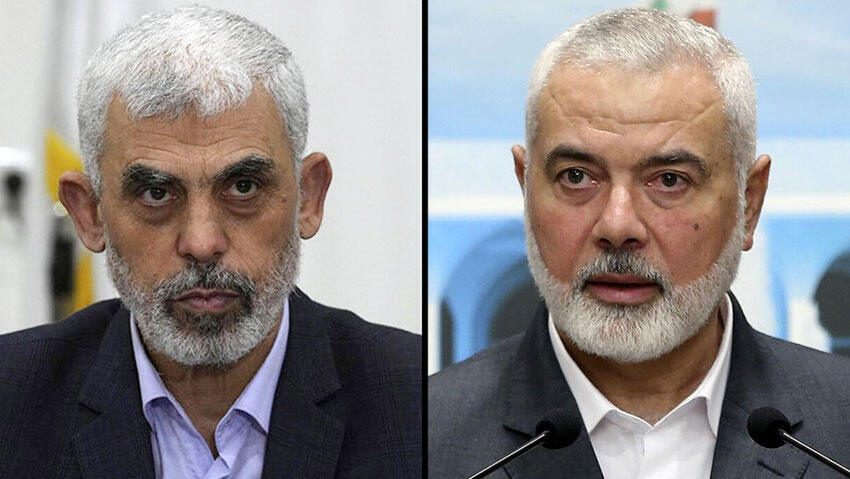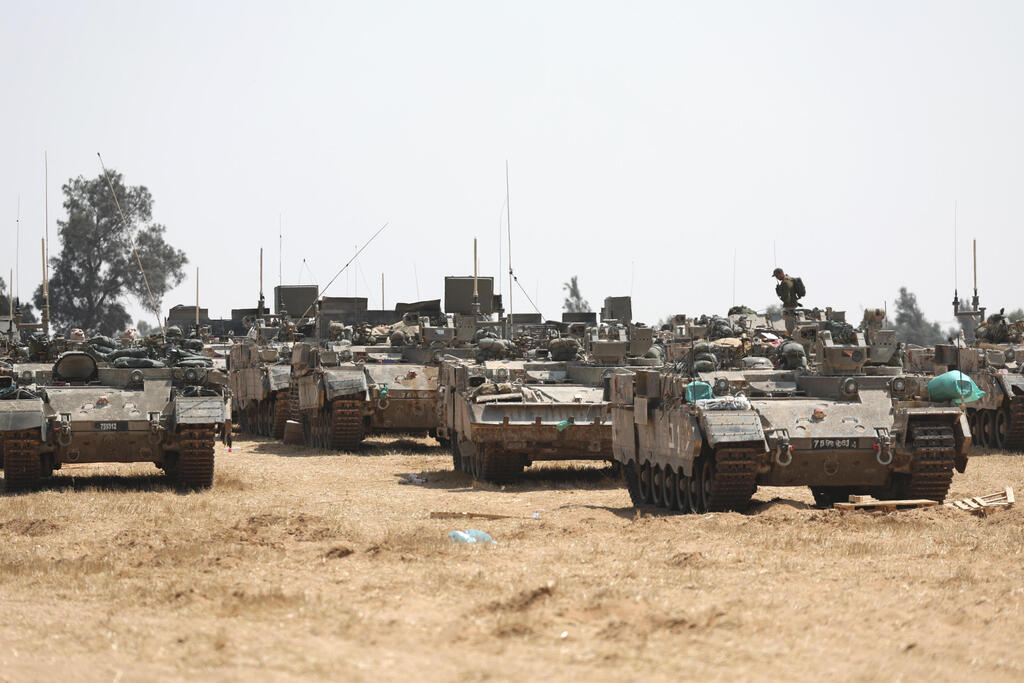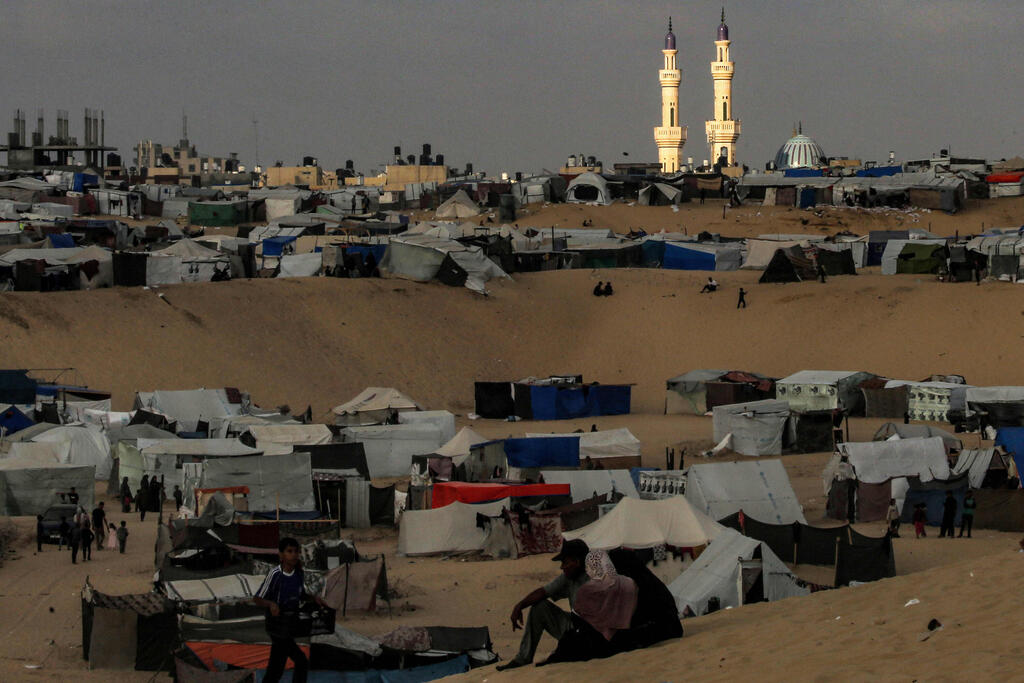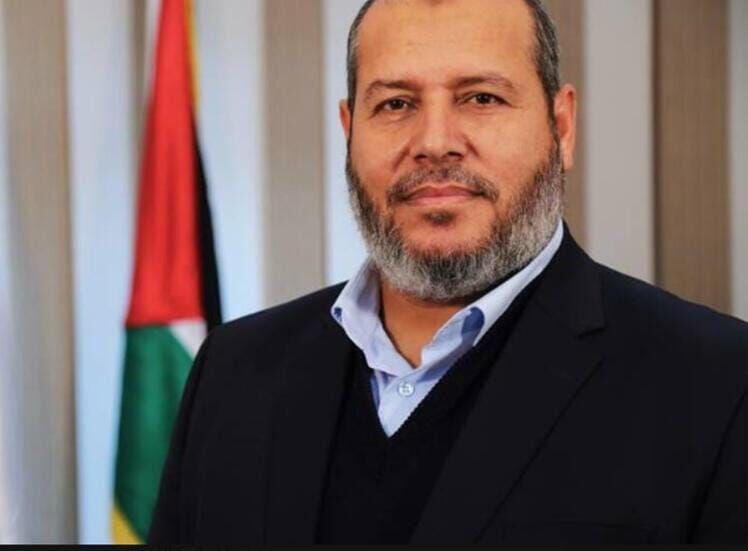Getting your Trinity Audio player ready...
Hamas says it will only free 18 hostages unless Israel agrees to end the war, according to a report on CNN reported on Tuesday quoting sources.
The network also said that Hamas refused to release only live hostages in the first phase of the deal and insisted that if 33 hostages were to be freed, they would include some who were killed. The terror group also demands that Israel would not be able to oppose the freeing of any prisoner from its jails, clearing the way for the release of Marwan Barghouti, who has been imprisoned for over 20 years after being convicted of multiple murders. He is considered a leading candidate to replace Palestinian Authority President Mahmoud Abbas.
Among the reported demands made by the Islamist terror faction was allowing Palestinians that would be released by Israel, to remain in the West Bank and not be exiled to Gaza as Israel has demanded. Hamas wants 30 Palestinians freed – up from 20 - for every Israeli hostage released and 50 – up from 40 - for every female soldier.
Hamas's reported approval of a cease-fire, which was announced on Monday, failed to prevent the start of Israeli action in Rafah. Israel rejected the demand to end the war. and claimed that Hamas has put forth a radical proposal, which it was turning down. Nevertheless, an Israeli delegation will attend Cairo talks, amid accusations that the U.S. had "set a trap" for Israel
Earlier reports claimed that the Hamas's proposal, the first stage of the deal would last for 42 days, during which Hamas would release 33 Israeli captives, including women (civilians and soldiers), children (under the age of 19 who are not soldiers), adults (over 50), as well as sick and injured civilians.
Hamas would release 3 hostages on the third day of the agreement, then three more every 7 days, and finally all the rest. If the number of living Israeli hostages does not reach 33, Hamas will make up the difference with returned bodies from the same category. In the second stage, all remaining living Israeli males, civilians, and soldiers, will be released. In the third and final stage, there will be exchanges of bodies and remains.
On Monday, the War Cabinet met again to determine whether the delegation going to Cairo would receive a mandate to conduct negotiations. The cabinet decided unanimously "that Hamas's response is poor, and Israel cannot accept it."
Hamas's proposal, as published in the Arabic media
Hamas will release living or dead hostages according to categories in their respective stages. In exchange for the gradual release of all Israeli hostages, Israel will release 50 prisoners for each female hostage from the first stage (including 30 inmates serving life sentences), based on Hamas's lists.
During the first stage, Hamas will release 3 hostages on the third day of the agreement, and then release 3 more every 7 days, starting with women (civilians and soldiers). After the sixth week, Hamas will release all civilian hostages included in this stage.
In return, Israel will release Palestinian prisoners held in Israeli prisons, according to lists submitted by Hamas. Hamas claims it will try to provide information about the number of Israeli captives to be released at this stage. On day 22, Israel will release all prisoners from the Shalit deal who were re-arrested.
According to Hamas' proposal, during the first stage where Hamas will release 33 dead or living hostages, Israel will have to release all women and children under 19 who were arrested in Gaza after October 7. This exchange must be done by the fifth week of the first stage by Hamas' demands.
The exchange process is complex and linked to compliance with the agreement's terms. The agreement includes a mutual cessation of hostilities, the withdrawal of Israeli forces, the return of displaced persons, and the entry of humanitarian aid. At the same time, the deal entails legal procedures required to ensure that released Palestinian prisoners will not be arrested on the same charges.
The first stage does not constitute a basis for negotiation for the second stage. During the first stage, the punishments imposed on prisoners in Israeli prisons and detention camps after October 7 will also be lifted, and their imprisonment conditions will be improved, including those arrested later.
At this stage, there will be a temporary cessation of military operations between the two sides and the withdrawal of Israeli forces along the Gaza border. Flights will also be suspended above the Gaza Strip for 10 hours a day and 12 hours on hostage-release days.
Also, displaced Gazans will return to their homes unarmed while the IDF withdraws populated areas, dismantling all facilities and military installations in this area. Hamas also demands that Gazans will be allowed to move freely in Gaza and humanitarian aid will enter Gaza unhindered.
In addition to the significant increase in humanitarian aid, Hamas demands the entry of fuel which, according to the terror organization, will be used to operate hospitals, businesses, powerplants, and equipment for removing debris from the first day of implementing the deal.
By day 16 of the deal, both sides will begin discussions regarding the second stage's hostages and prisoners. At this stage, Hamas will release male soldiers and men and both sides will agree on the main details by the fifth week of the first stage.
Since the beginning of the deal's implementation, the Gaza-based international agencies, including UNRWA, will provide humanitarian services in the Gaza Strip, throughout the agreement. In addition, infrastructure will be rebuilt including water, electricity, sewage, roads, and communication in all areas of the Gaza Strip and the necessary equipment will be brought in. Also, residents who lost their homes will be housed in temporary homes, caravans and tents while Gaza is rebuilt.
From the first day of the first stage, no less than 50 injured military personnel will be allowed to pass through the Rafah crossing for medical treatment. Countries and the UN will supervise the comprehensive reconstruction of homes, civilian facilities, and infrastructure that were destroyed due to the war. All steps in this stage will continue in the second stage until a permanent cease-fire is declared.
The second stage will be characterized by a cease-fire and the release of all remaining Israeli men in exchange for a "mutually agreed number of prisoners" from Israeli prisons, and a complete withdrawal of Israel from the Gaza Strip. In the third stage, there will be exchanges of bodies and remnants from both sides. After the exchange is complete, Gaza will be rebuilt for the next 3 to 5 years, including homes, civilian infrastructure, compensation for all affected individuals, and the siege on Gaza will be lifted. Qatar, Egypt, the U.S., and the UN will back the deal.
The first stage will begin without a permanent cease-fire
Yahya Sinwar's deputy, Khalil al-Hayya, said on Monday that Hamas agreed to begin the first stage of the deal even without a permanent cease-fire. According to him, the first stage will include the withdrawal of the IDF to the border area, and only in the second stage will Israel commit to a permanent cease-fire.
"In this agreement, we achieved the goals of a cease-fire, the return of the displaced, humanitarian aid, and a serious exchange deal. On the first day of the first stage of the agreement, there is a clear commitment to temporarily halt military operations. There are no restrictions on the return of the displaced, and this is a clear provision in the agreement. According to the proposal we approved, Israel will withdraw on the third day from Rashid Street, and the displaced will be able to return, and on day 22, Israel will withdraw from Salah al-Din Street," he added.






